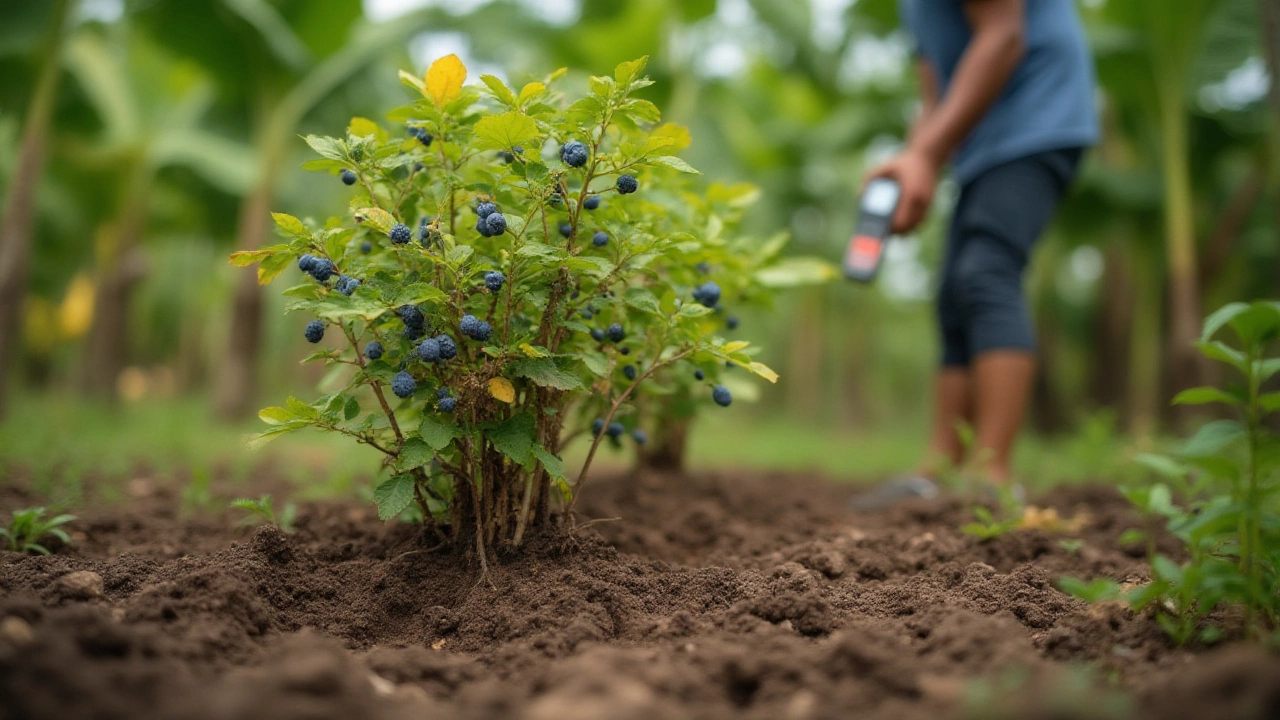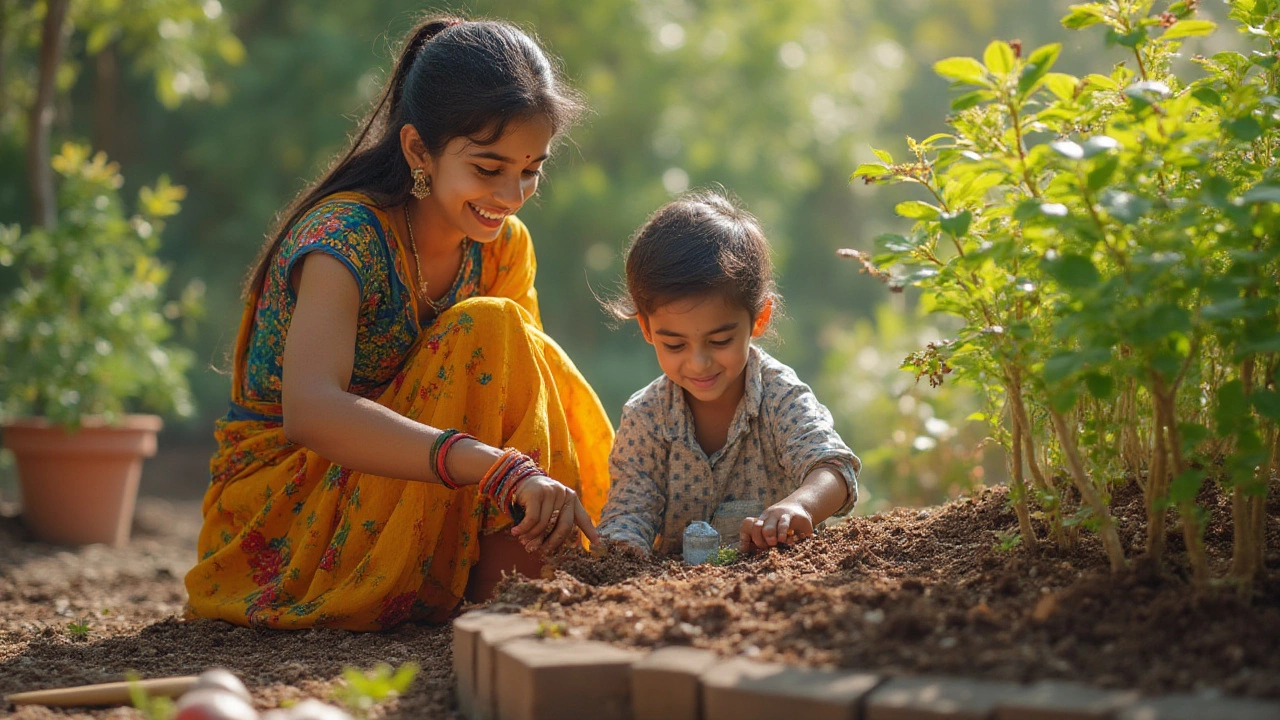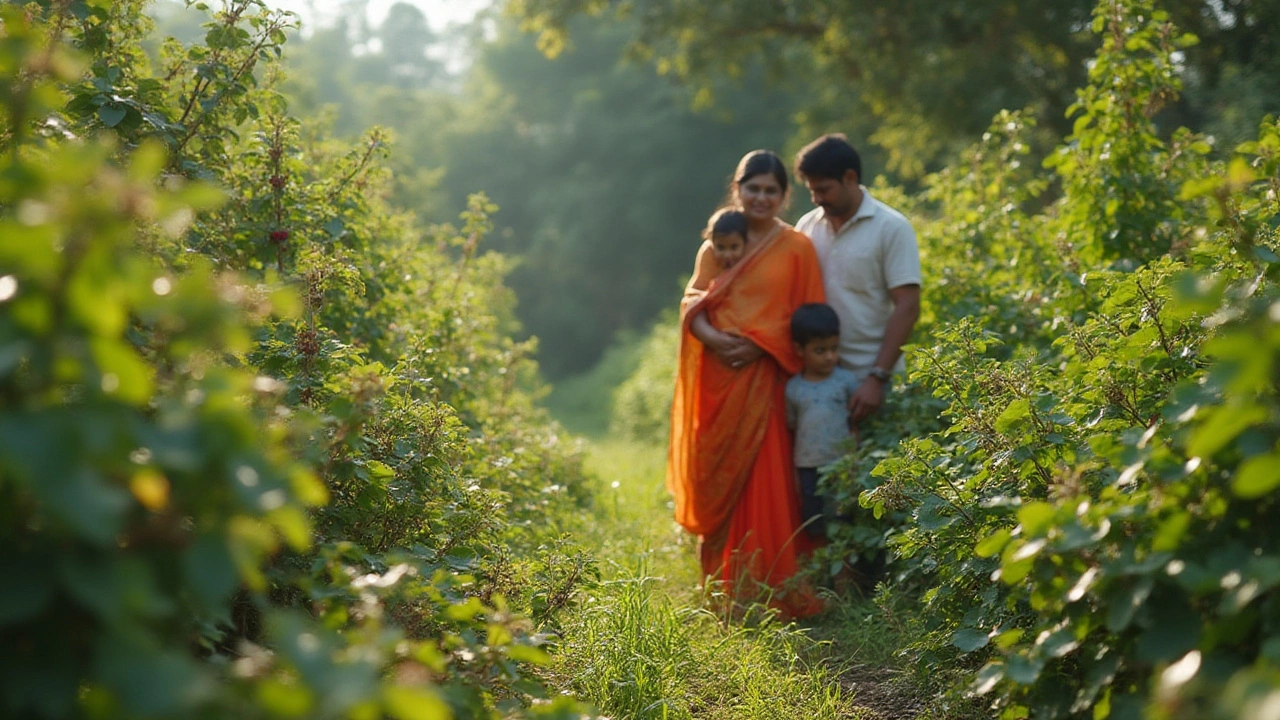Blueberries look so easy. It’s just a bush, right? Stick it in the ground, give it some water, and soon you’ll be picking baskets of berries like you’re in Maine. But here’s the kicker: blueberries are picky—maybe the pickiest fruit you’ll meet. People plant them all over the place, wonder why nothing grows, and blame their thumb for being any color but green. The truth? Blueberries are not failing. You’re probably planting them in the wrong spot.
The Soil Sins: Why Blueberries Hate "Normal" Dirt
If you plant blueberries in plain garden soil, brace yourself for disappointment. These bushes are fussy eaters—they crave special soil. What they want is acidic earth, way more acidic than most backyard dirt. Grab a pH test kit and check. Anything above 5.5 pH is bad news for blueberries. Aim for 4.5 to 5.2 pH—think of it as their version of coffee in the morning. Most gardens in places like Manchester will turn up pH values closer to 6 or 7. Let’s put this in perspective: a pH of 6 might be great for your carrots or lettuce, but it’s like making blueberries eat chalkboard dust. Ever wonder why commercial blueberry farms dump pine needles and sulfur into their soil year after year? They know the secret. Here’s a tip—if your yard’s full of lime, chalk, or heavy clay, don’t even think about blueberries without fixing the pH first.
But it’s not just the acid—it’s what’s underfoot. Soggy, compacted soil is a blueberry killer. Blueberries have shallow, wiry roots that need good drainage. Plant them in heavy clay and you’ll get stunted bushes and yellowed leaves, sometimes within weeks. Researchers have found that blueberry roots suffocate if left in waterlogged dirt for more than 48 hours. Avoid planting in low-lying, puddle-prone patches. The best soil will feel springy, almost bouncy—a mix of peat moss, pine bark, and sand. In some yards, raised beds are the only way to guarantee decent drainage and consistent pH.
| Soil Type | Suitable for Blueberries? | Notes |
|---|---|---|
| Sandy Loam | Yes | Good drainage, adjusts pH easily |
| Clay | No | Poor drainage, compacts easily |
| Peaty Soil | Yes | Naturally acidic, loose texture |
| Chalky Soil | No | Wrong pH, hard to fix |
Bad Company: Location Traps that Doom Blueberries
Think location doesn’t matter? Think again. You can give blueberries their dream dirt and still get nothing if you plant them in the wrong place. First rule, skip under big trees. The shade might feel gentle, but blueberries like sun—at least six hours a day. Less sunlight? The leaves will hang limp and the berries, if you get any, will taste like they’ve grown in the shade (because they have). Next, don’t squeeze them beneath gutters or rooflines. That’s a recipe for waterlogging after every rain, and blueberries crumble fast if their roots are soaked for days.
Spacing’s another trap. Cramming bushes together, or planting right on top of existing roots, leads to fights for nutrients and water. ‘Close enough’ isn’t close enough—leave at least 1.5 meters between each plant. If you’re treating them like bedding plants, you’ll end up with a scrubby hedge, not a berry patch. Watch out for “hot spots” too, like near reflective fences or dark brick walls—these exaggerate heat and can shrivel young blueberry bushes in July when the sun ramps up.
Dozens of gardeners in the UK have made the mistake of planting alongside vegetables like onions or garlic. Why’s this trouble? Root competition. Blueberries really hate sharing space. They send roots sideways instead of deep down—so anything with sprawling roots or greedy feeders like tomatoes or potatoes should be planted in another bed entirely. Oh, and wind—planting in wide-open, exposed spaces lets cold winds strip away moisture. If you find your garden is especially breezy, use a low hedge or a fence to give your bushes a break.

The Salt Factor: Urban Pitfalls and Pollution Risks
Blueberries do not like salt. Not the kind you sprinkle on chips—the kind that piles up when winter roads are gritted, or lawns are sprinkled with high-salt fertilizers. If your spot is near a busy street, pay attention: UK city road de-icing adds salt to the soil that seeps into nearby yards. A study from a Manchester city survey found roadside blueberry bushes had 40% lower berry production thanks to salt drift. Move them at least 15 meters from a major road, or higher if possible.
Another thing about cities—pollution, especially in runoff. Blueberries are sensitive to heavy metals and chemicals found in many urban soils. Don’t plant next to old buildings where paint flakes or industrial waste might be buried. Planting next to driveways or old sheds can expose the roots to unwanted toxins. A raised bed with fresh compost and clean topsoil is your friend, especially in a dense urban garden.
Then there’s your water. Ever tried collecting rainwater for blueberries? Tap water in much of the UK contains lime which pushes your soil’s pH the wrong way, little by little. This adds up over a season. Rainwater is a secret weapon—catch it in a barrel and your blueberries will thank you with better leaf color and sweeter fruit.
Garden Myths: The Mistakes People Keep Repeating
Someone always claims they “just stuck a blueberry in the lawn and it grew huge.” Don’t be tricked—blueberries are the exception, not the rule. Most times, sowing them in the same spot as raspberries or blackcurrants invites pests, since these berries share some diseases. Root rot, aphids, fungal infections—these can jump from old plants to new in no time. Avoid using soil where other berries have failed, unless you replace it completely.
Adding manure is another goof. Blueberries hate it. Manure makes the soil alkaline—a complete mismatch. Instead, swap in leaf mold, wood chips, or sulfur if you want positive results. A lot of folks throw compost tea or miracle-gro at blueberries—fast way to push pH out of range or burn the roots.
Finally, skipping mulch can doom even well-planted bushes. Blueberries love mulch made from pine bark or needles, not bark from hardwoods. The mulch keeps in moisture and nudges the soil’s pH lower. Rake it gently each autumn to keep things fresh.

Smart Solutions: Where Blueberries Thrive
By now, you might wonder if it’s possible to keep a blueberry alive in Manchester—or anywhere, really. The good news? Loads of gardeners get gorgeous crops every summer, if they’re careful where they plant. The safest move: stick with a raised bed, 30-40cm deep, filled with peat-based compost mixed with pine bark and a touch of sand. You can use garden sulfur to help the pH drop before planting, then test again in a few weeks.
For pots, blueberries do even better—especially if you’re short on acid-loving space in the ground. Pick a roomy container (40cm wide, minimum), fill it with ericaceous compost, then keep it well-watered with rainwater, not tap. Move it if it looks sulky; you can chase the sun across the patio if that’s what it takes.
Here’s a quick checklist for the best-possible berry spot:
- where not to plant blueberries: Avoid normal garden soil, shaded spots, and places close to salty roads.
- Find a patch with at least 6 hours of direct sunlight.
- Test your pH every spring, adjust with sulfur if needed.
- Use rainwater, not tap water, for regular watering.
- Keep them far from heavy feeders like tomatoes or potatoes.
- If you’re in doubt, use a container—control is everything.
One last trick—blueberries love company, but only of their own kind. If you plant more than one variety together (and you should), you’ll boost your crop two or three times over thanks to cross-pollination.
In the quest for perfect berries, dodging the wrong spot is half the battle. Get it right, and you’ll have blueberries that taste like summer itself, year after year.

